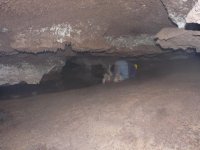ThTx
Hero Member
- Dec 19, 2006
- 855
- 83
- Detector(s) used
- Garrett AT Pro, Garrett Master Hunter CX Plus, Teknetics G2
- Primary Interest:
- All Treasure Hunting
There is supposed to be a story or legend dealing with a limestone cave in the mountains just out of Artesia. A Mexican Army captain supposedly buried a chest of Mexican gold coins and several muleloads of gold bars that he was supposed to be delivering to Santa Fe. How about an outlaw cache buried in the area of Artesia? Anyone have any informaiton on either or both of these stories?





